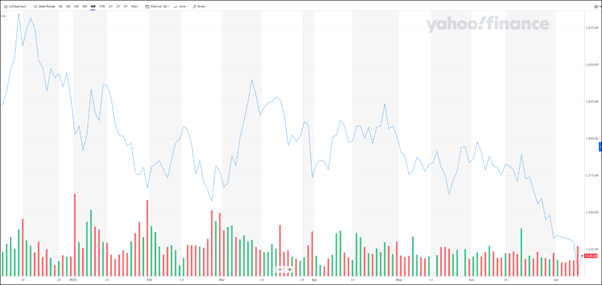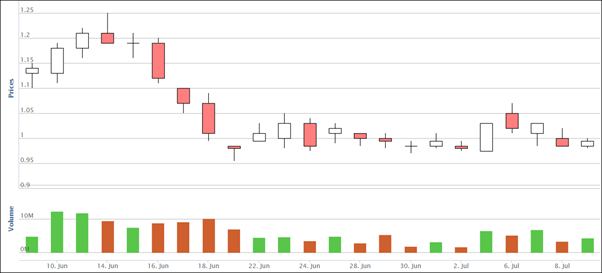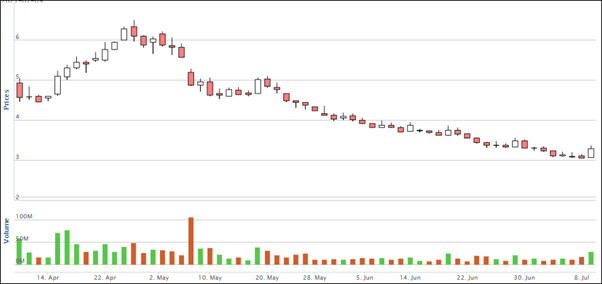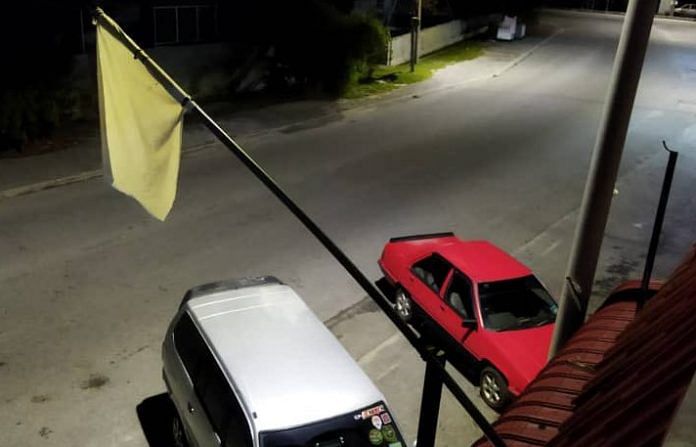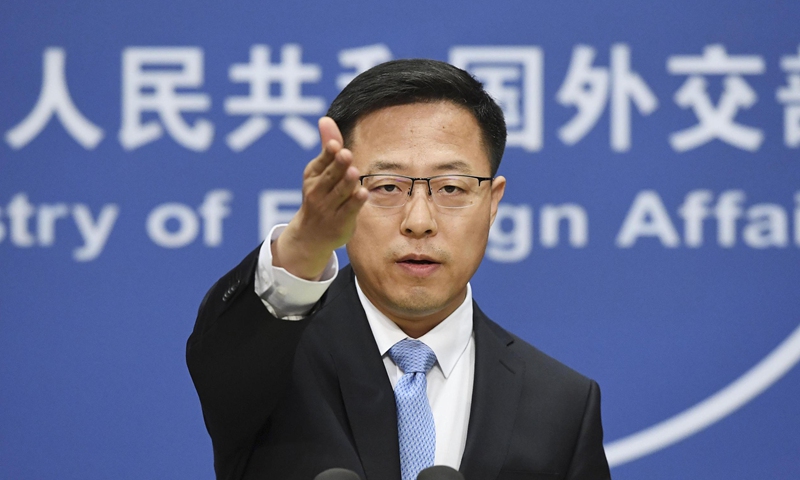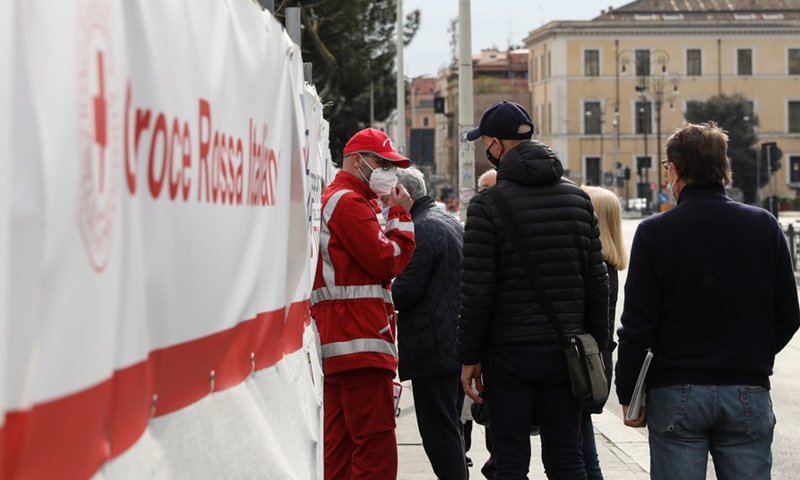Personal attacks on scientists do not change natural origins conclusion: source to Lancet letter
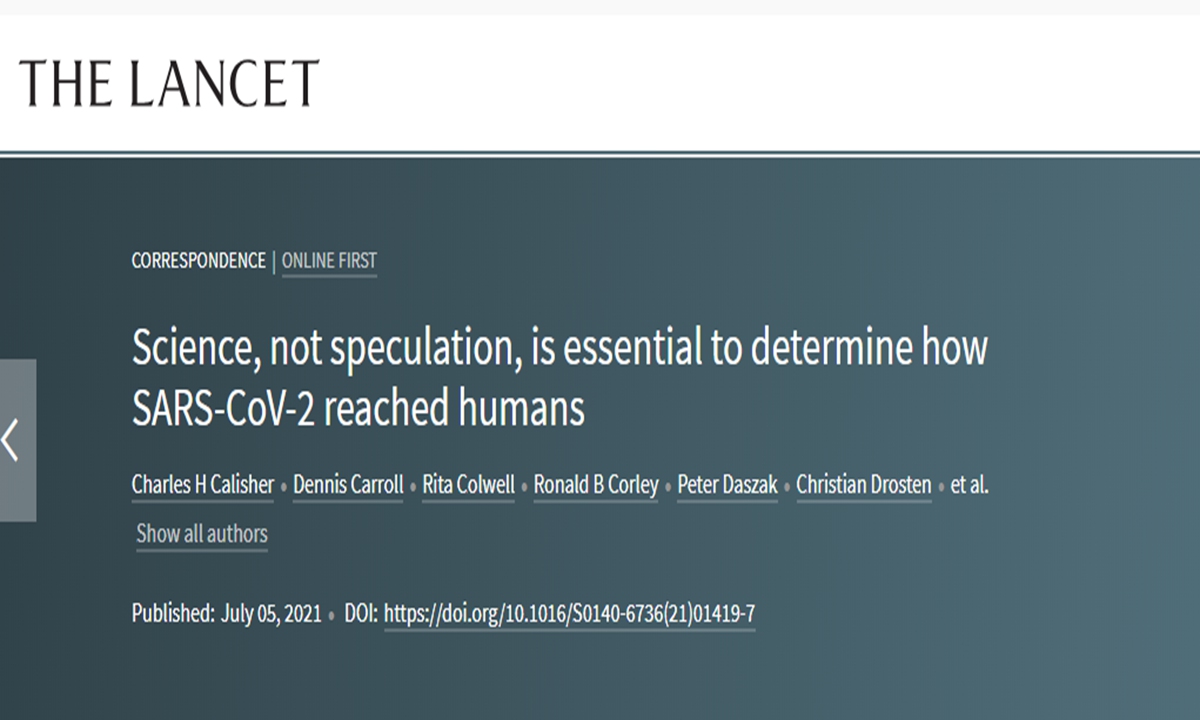
Screenshot
of an open letter on international media journal The Lancet, urging that science, not speculation, is essential to determine how the virus that triggered the COVID-19 pandemic reached humans. Photo: website of The Lancet.
Despite mounting political pressure, dozens of scientists recently published an open letter on international media journal The Lancet. In the letter they urged that science, not speculation, is essential to determine how the virus that triggered the COVID-19 pandemic reached humans, reiterating that the virus most likely originated in nature and not in a laboratory and they refuted the US-led "lab-leak" theory that put some prominent epidemiologists into a difficult situation.
Such a brave and clear way of refuting rumors, targeted bashing, disinformation and conspiracy out of political purposes is very much needed, which was welcomed by scientists, officials and the public.
Twenty-four scientists around the world including Peter Daszak, a member of the WHO-led team studying the coronavirus's origins, said in the letter that besides reaffirming solidarity with those in China who confronted the outbreak, they wanted to express their view on the most likely scenario that the SARS-CoV-2 originated in nature, not in a laboratory - a conclusion drawn on the basis of genetic analysis of the new virus and well-established evidence from the previous emerging infectious diseases.
"We believe the strongest clue from new, credible, and peer-reviewed evidence in the scientific literature is that the virus evolved in nature, while suggestions of a laboratory-leak source of the pandemic remain without scientifically validated evidence that directly supports it in peer-reviewed scientific journals," said the open letter, which was also seen as a highly courageous move in refuting the growing conspiracies concerning the origins of the virus considered as a coordinated political campaign led by anti-China hawks from former Trump administration officials like Mike Pompeo.
The right-wing press has been contacting authors, one by one and repeatedly, throughout the last six months, pushing them to state whether they would change their stance. For example, the Daily Mail has published pictures of all the scientists who had signed the letter and said that some of the scientists changed their stance by believing in the 'lab-leak' theory, a source close to the open letter in The Lancet told the Global Times on Wednesday.
The source said that they line up pictures and go through each person because they're targeting scientists individually. This is the same strategy the right-wing press used for attacks on climate change scientists - revealing private emails by freedom of information act requests, then attacking them in the press.
"This re-confirmation from almost all of the authors shows there is still strong support for scientists in China and around the world working on COVID-19 and that personal attacks will not change the facts of the issue - there is no evidence of a lab leak, but mounting evidence that the virus spilled over from wildlife in the same way SARS did," the source said, noting that it also calls for continued scientific collaboration with China to learn about the origins, rather than politically motivated attacks.
Prominent US and Australian scientists focused on tracing the COVID-19 origins are now facing tremendous political pressure, and some have been sidelined for not yielding to politicians-driven conspiracy theories on the matter and they received anonymous threats, the Global Times recently learned from people with knowledge of the matter.
Since the Biden administration ordered in May the US intelligence agencies to report on COVID-19 origins within 90 days, several US scientists had been put at the center of the political storm, who have also been suppressed by the Republicans and extremists.
Science works best in an environment of trust and respect, which permits objective and transparent collaboration, Gerald Keusch, professor of medicine and international health at Boston University Schools of Medicine and Public Health and who signed the open letter, told the Global Times on Wednesday via email.
"Until that is fully restored the next-phase scientific investigations the entire world so desperately needs will be more difficult to establish. The longer this takes, the more difficult will be the task," he said.
The Washington Post said in an article in May that the "lab-leak" theory jumps from "mocked to maybe" as Biden ordered an intelligence review, as the hypothesis has been ridiculed by scientists as a baseless conspiracy theory fueled by Trump in order to shift the blame as the US government's failed response to the pandemic had triggered public outrage.
Some analysis suggested that the Biden administration appeared to be responding to political pressure when he decided to renewe the conspiracy from his predecessor. However, intelligence collected showed that the majority leaned toward the natural origins scenario, but some were inclined to the "lab-leak" theory, on which Biden described as "low or moderate confidence" in their conclusions, while other branches of intelligence did not have enough evidence, the Financial Times reported in May. And this has also sparked concern that the 90-day investigation on the matter ordered by Biden is not long sufficient to reach any solid conclusion.
Uphold spirit of science
"I admire Western scientists who dare to speak out even in such a dire environment. I believe the Lancet and other scientific publications should give them a greater chance to voice their suggestions," Zeng Guang, a former chief epidemiologist at the Chinese Center for Disease Control and Prevention, told the Global Times on Wednesday.
The most ridiculous thing that the Biden administration has put forward is asking intelligence groups to investigate the issue, Zeng said, noting that it backed off as the Biden administration announced that US intelligence officials are cautioning that a 90-day review into the origins of the COVID-19 virus may not produce a definitive explanation.
"I believe the Biden administration knows that the Wuhan 'lab-leak' theory could not be proved as it is not true at all. They are sticking to the hypothesis just to throw mud at China, and divert public attention to China to cover their bungling of the pandemic," he said.
A source close to the matter told the Global Times earlier that some scientists are being threatened by emails, phone calls and messages on social media, and in the US, people who attacked them generally have far-right and even white supremacist leanings. The GOP members of Congress are whipping those extremists up.
"There is a coordinated political campaign to undermine anyone involved in the origins-tracing work if they do not fit the 'lab-leak' narrative. This is coming mainly from the right wing circles in the US, Australia, and in Europe, mainly the UK," the source said.
However, there were courageous scientists around the world who joined to write this open letter to fight such a political maneuver.
"All of us, and so many colleagues who were not part of the original correspondence and the current update believe that high quality expert global collaboration among scientists who know and trust one another is essential to trace the pathway from bats to people," Keusch said.
Jeremy Farrar, director of Wellcom, a global charitable foundation which supports science to solve urgent health challenges, and the co-author of the letter on the Lancet, was quoted as saying in an email the foundation sent to the Global Times on Wednesday that "in my view, the most likely scenario is that the virus crossed from animals to humans and then evolved in humans. The best scientific evidence available to date points to this."
It is most likely it crossed the species barrier to infect and then adapt to humans at some point in 2019, but there are other possibilities which cannot be completely ruled out and retaining an open mind is critical, Farrar said, noting that there is no place for unsubstantiated rumors, or conspiracy theories often fueled for other purposes.
"The general trend of the international community to respect science and uphold justice will remain unchanged," Wang Wenbin, a spokesperson of the Chinese Foreign Ministry, told a press conference on Wednesday, in response to a question about the open letter.
The authoritative conclusion of the WHO-China joint expert group will not change, and work on COVID-19 virus origins should be based on a global perspective and not limited to a certain region, Wang stressed.
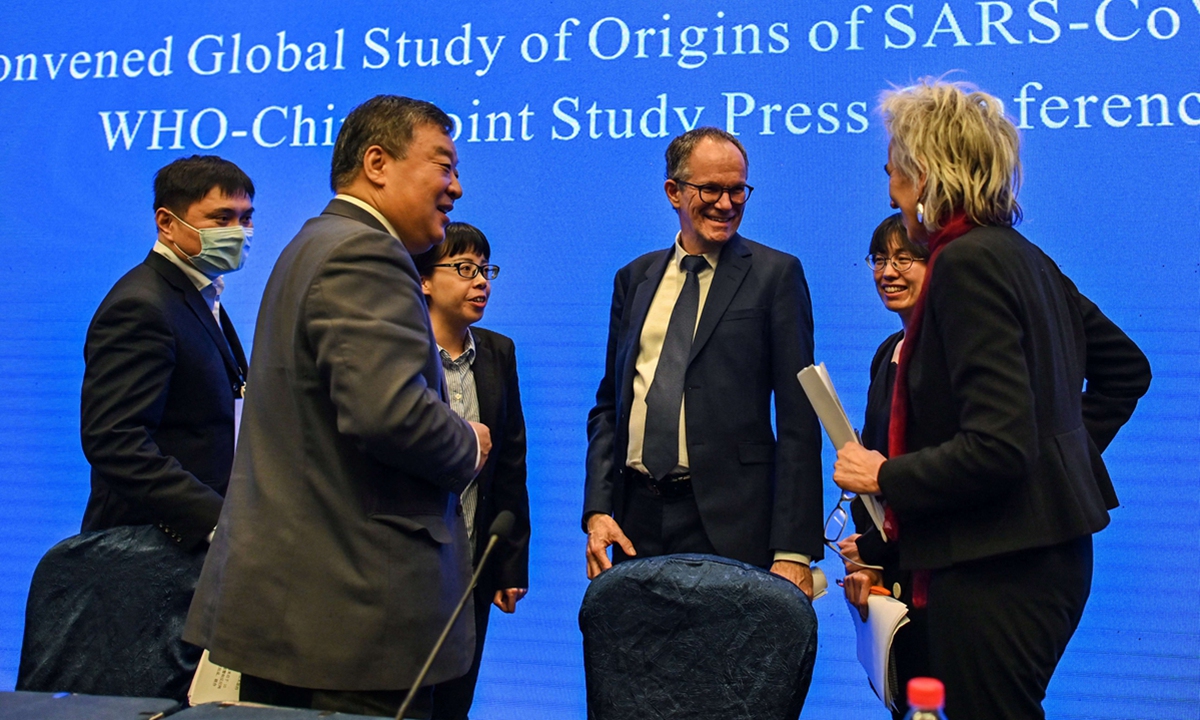
Peter Ben Embarek (center) talks with Liang Wannian (left) and Marion Koopmans (right) after a press conference to wrap up a visit by an international team of experts from the World Health Organization (WHO) in the city of Wuhan, in Central China's Hubei Province on Tuesday. Photo: AFP
What's next?
A joint WHO-China report on tracing the origins of coronavirus was released in March, which still leaves the question of the virus origins unanswered.
The report, generated after WHO experts visited Wuhan, the Chinese city first reporting a COVID-19 case, dismissed the "lab-leak" conspiracy theory, and recommended transmissions between animals and humans, and transmissions through frozen food.
We continue to assess all of the sequence information about the virus and its origins, which remains overwhelmingly convincing of the origins over decades in nature, from bats to people, probably with intermediate mammalian hosts, although those remain uncertain, Keusch noted.
"That is the problem now. If we don't know how it reached humans it is not possible to target the response to be sure this will not happen again," he said.
Since the outbreak of the COVID-19 pandemic, the research results of Chinese medical and scientific professionals have been published in international journals, including the Lancet, many times, providing valuable references for researchers around the world to better understand the virus and the symptoms of the deadly disease. Observers also said those journals know science and academic freedom shouldn't be taken hostage by politics.
Judging from the pattern of coronavirus transmission, we can see that the virus grows from less transmissible to more transmissible, and at that time in Wuhan, the virus became very infectious that it soon caused cluster infections, Zeng noted.
"Then we have to look back, where it was hiding when it is less transmissible? Would it be possible that it hid in countries where earlier cases than Wuhan had been reported, such as Italy, Spain and the US? Should those countries, too, be subjected to the WHO virus origins probe?" Zeng asked
Source link
Exclusive: Western scientists face government probe, death threats for opposing COVID-19 lab-leak theory: source

Peter Ben Embarek (center) talks with Liang Wannian (left) and Marion Koopmans (right) after a press conference to wrap up a visit by an international team of experts from the World Health Organization (WHO) in the city of Wuhan, in Central China's Hubei Province on Tuesday. Photo: AFP
Prominent US and Australian scientists focused on the COVID-19 origins tracing are now facing tremendous political pressure, and some have been sidelined for not yielding to politicians-driven conspiracy theory on the matter and received anonymous threatening letters with bullets, the Global Times learned from people familiar with the matter. Chinese experts have urged the US to stop politicizing the origin-tracing research and conduct a comprehensive investigation in the US.
Since the Biden administration ordered in May US intelligence agencies to report on COVID-19 origins within 90 days, several US scientists have been put at the center of the political storm. These scientists have been facing the suppression of Republicans. For example, Anthony Fauci, who advises US President Joe Biden and leads National Institute of Allergy and Infectious Diseases, has been a target of the GOP. Elise Stefanik, the House Republicans conference chair, sent a fundraising email recently with the subject "Fire Fauci" and senator Josh Hawley also tweeted that Fauci's recently released emails and investigative reporting about COVID-19 origins are shocking. The time has come for him to resign and for a full congressional investigation into the origins to take place, according to US media reports.
Under such growing political pressure, Fauci has been increasingly ambiguous on his rhetoric. Another US scientist, who also took part in the WHO-China joint team on the origins research, has also been a target of such attacks, the Global Times learned. After collaborating in the project with China, Peter Daszak, president of EcoHealth Alliance, was recused from the UN-backed commission work on the origins of the epidemic.
A source close to the matter told the Global Times earlier that the US scientist is being personally threatened by emails, phone calls and messages on social media, and people who attacked him generally have far-right and even white supremacism leanings. GOP members of Congress are whipping those extremists up now.
"There is a coordinated political campaign to undermine anyone involved in the origins work if they do not fit the lab leak narrative. This is coming mainly from the right wing circles in the US, Australia, and in Europe, mainly the UK," the source said.
In the meantime, some so-called "international scientists" seeking attention have been making grandstanding campaigns by issuing open letters to call for an investigation into the COVID-19 origins.
It's revealing that some so-called "international scientists" who recently called for a COVID-19 origins inquiry were politicians with political agendas. But many scientists who truly uphold the spirit of science - objectivity and impartiality - have been attacked by some governments and extremists, or even received death threats, Chinese Foreign Ministry spokesperson Wang Wenbin said at Monday's routine press conference. Wang said that the right idea was to carry out more in-depth and detailed scientific studies in a wider range.
Death threats, unable to continue work
Letting politics to override science is not only prevailing in the US but also in Australia. Evolutionary biologist Edward Holmes at the University of Sydney, who released an open letter back in last April, is being probed by the Australian government. In the letter, Holmes claimed that there was no evidence that SARS-CoV-2, the virus that causes COVID-19 in humans, originated in a lab in Wuhan, Central China's Hubei Province. Like many others who oppose the lab-leak theory, Edward Holmes has received a number of threatening letters with real bullets, the Global Times learned from the people familiar with the matter.
He was threatened that if he continued expressing opinions on the origins of the virus, he may face even further crackdown, a source close to the matter said. Due to the tremendous pressure Holmes faces, he is undergoing psychotherapy and is unable to carry out normal scientific research work, the source said.
Holmes did not reply to a Global Times inquiry before the article was published. A media adviser for the University of Sydney sent an email to the Global Times after the article was published, denying the content about Holmes and insisting he talked to the professor about the issue. Later, an email that appeared to be sent from Holmes' account to the Global Times also denied the part about him.
According to a Sydney Morning Herald report in October, 2020, Holmes became the target of online harassment after he co-authored a paper in Nature Medicine debunking the pervading conspiracy theory that the virus was engineered in or escaped from a laboratory in Wuhan. He also received "death threats" from conspiracy theorists, the report said.
Though the US government and politicians have been pushing forward their political agenda in bashing China with the lab-leak theory, targeting a number of global scientists and the Wuhan Institute of Virology (WIV), most scientists spoke out and dismissed the theory, reiterating that the most likely scenario is that the virus has a natural origin.
For instance, Danielle Anderson, the only foreign scientist who once worked at the WIV, was quoted as saying in a Bloomberg report on June 28 that no one she knew at the Wuhan institute was ill toward the end of 2019. Recently the Wall Street Journal falsely claimed three researchers from the lab were hospitalized with flu-like symptoms in November 2019. She also described the place as having the highest biosafety designation with very strict procedures.
After she told Health Feedback that it's "simply false" to label the WIV as a bioweapons research lab, she had her name "trashed so viciously by extremists she had to call in police," the Sydney Morning Herald reported on Sunday.
"I really find it hard to think that if something escaped from a laboratory it would be this difficult to prove that concept. Among other things, it is an unknown virus that has no signs of genetic engineering inside," said Massimo Galli, director of Infectious Diseases at Milan's Luigi Sacco Hospital, the Adnkronos reported on June 22.
He said that there is a 99-percentage chance that the spread of the virus is a natural event. "This story of the laboratory virus does not have the slightest basis from a scientific point of view to be carried forward," added Galli.
Next country for tracing virus origins: the US
The US National Institute of Health issued a new antibody testing study that suggested the virus was present in some states in late December 2019, earlier than the first case reported in the country in January 2020. With some US scientists reporting more earlier cases, Chinese scientists have urged that these cases should serve as evidence for the next-stage virus-tracing investigations in the US.
In the All of Us study, by the US institutes released on June 15, researchers analyzed more than 24,000 stored blood samples contributed by program participants across all 50 states between January 2 and March 18, 2020. "In this study, the first positive samples came from participants in Illinois and Massachusetts on January 7 and 8, 2020, respectively, suggesting that the virus was present in those states in late December," it said.
However, the study authors noted several limitations to their study. While the study included samples from across the US, the number of samples from many states was low.
Yang Zhanqiu, a virologist from Wuhan University, told the Global Times on Monday that the research has shown the epidemic in the US probably emerged earlier than in Wuhan. In other words, the epidemic in the US was probably caused by a domestic virus rather than one transmitted from Wuhan.
But more large-scale epidemiological surveys are needed in the US to identify the relationship between these cases and those in other countries and regions, including Wuhan, to determine the origin and transmission route of the virus.
Yang mentioned the outbreaks of flu and pneumonia related to the use of E-cigarette in the US prior to the COVID-19 pandemic, calling for the US to release epidemiological surveys into these outbreaks, if they did any, to find out if they were COVID-19 cases.
The US has nearly all the variants spreading around the world, based on this, the virus most likely originated in the US rather than the Wuhan lab, according to Yang.
Source link
RELATED ARTICLES
The US has no right to blackmail or threaten China on the issue of the coronavirus origins probe, ...
US internet giants used as geopolitical tools to threaten HK: Global Times editorial
The World Health Organization (WHO) and some of its scientists confirmed to the Global Times on Wednesday that .
Related posts:

The US has found the world order quickly shifting and is feeling uneasy with the challenge from China.















 Nasam founder and chairperson Janet Yeo started Nasam in 1996 while she was recovering from a stroke. Photo
Nasam founder and chairperson Janet Yeo started Nasam in 1996 while she was recovering from a stroke. Photo



